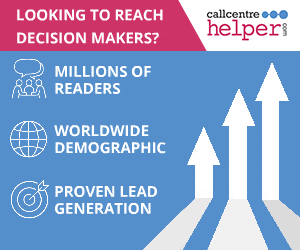The Sandwich Technique is a widely-used method for delivering feedback effectively, designed to balance positive reinforcement with constructive input.
By framing feedback with encouragement and actionable suggestions, it creates a supportive environment that fosters growth and collaboration.
We asked Kim Ellis, Chief Learning Architect at Go Ginger Learning Solutions, for advice on how to use the Sandwich Technique in customer service to provide feedback to both agents and customers.
Video: How to Use the Sandwich Technique for Customer Service
Watch the video below to hear Kim how to use the Sandwich Technique in to provide effective feedback:
With thanks to Kim Ellis, Chief Learning Architect at Go Ginger Learning Solutions, for contributing to this video.
What Is the Sandwich Technique?
The Sandwich Technique involves structuring feedback into three parts: starting with positive reinforcement, providing constructive feedback in the middle, and ending with another positive comment.
“The Sandwich Feedback Technique is fantastic for when you need to give constructive feedback to a colleague, a co-worker, or even a customer.
The way that the feedback works is that you start off with some positive reinforcement, and then you give the constructive feedback, and then you round it off with some more positive reinforcement.”
The framework for the Sandwich Technique is:
- Start with a positive comment to set a supportive tone.
- Provide constructive input to address areas for improvement.
- End with another positive comment to reinforce confidence and motivation.
This method helps to maintain a constructive tone and encourages improvement without discouragement.
How to Use the Sandwich Technique with Agents
When giving feedback to agents, the Sandwich Technique is a valuable tool for addressing areas for improvement while recognising their strengths.
For instance, if an agent handled customer rapport well but struggled with efficiency, you could start by praising their greeting and rapport-building skills, as Kim explains:
“The Sandwich Feedback Technique is great when you need to give feedback to your agents. Let’s say, for instance, that one of your agents has had an interaction with a customer, and they could have done better, but they handled some of the call really, really well.
What you would do is you would take some of the positive elements, for instance you might say the way that you greeted the caller was excellent, you built rapport throughout.
One thing that you could maybe improve on for the next call, would be to make sure that you have all the information to hand, so you’re not having to have so many pauses or place the customer on hold.
And then you can round it off with another positive reinforcement, and say the customer went away happy, they had all the information that they needed, and ultimately their query was resolved.”
How to Use the Sandwich Technique with Customers
The Sandwich Technique can also be effective in customer conversations, such as handling complaints or retention calls.
For example, when addressing a broadband price increase, as Kim continues:
“So now let’s switch that over to how do you use the Sandwich Technique with a customer. Imagine that you’re on the retention line, or your agent is on the retention line, and you’ve got a customer contacting you because they have had an increase in their broadband package price.
Now first of all, we can thank the customer for being a loyal member with us, a loyal customer, they’ve been with us for X amount of years, thank you very much.
And then you come in with the price increase, and explaining why the price has increased – that’s your constructive bit in the middle.
And then rounding it off with this price increase means that your broadband speeds have increased to X, or we’re giving you this additional service, or this is the additional support.
Really highlight what the company is doing for that customer that’s going to make them want to stay with you.”
Tips to Use the Technique Wisely
While the Sandwich Technique is versatile, it’s essential to use it appropriately. Avoid overusing it or adding meaningless positives just to fit the structure.
Each positive element should be genuine and specific, contributing to a meaningful conversation.
Proper preparation ensures that all three parts of the feedback carry weight, whether for agents or customers.
“When you’re using the Sandwich Technique, you need to make sure that you’re using it at the right time, for the right kind of feedback. One of the things that you need to look out for is overusing the Sandwich Technique, and also not really thinking about the two positives.
It’s very easy when you’re giving feedback just to focus on negatives, or just to focus on the constructive element, and then kind of just pad it out at the ends with a little bit of positive feedback that isn’t really meaning anything to that agent, or to that customer.
So you really need to think about all three elements as separate entities before you’re giving that feedback.”
If you are looking for more great insights from the experts, check out these next:
- How to Use the 3 Strike Rule in the Contact Centre
- Four Ways to Reduce Agent Burnout and Attrition
- What Does Contact Centre Partial Automation Really Mean?
- What’s Really Stopping Your Talent From Blooming?
Author: Robyn Coppell
Reviewed by: Hannah Swankie
Published On: 9th Jul 2024 - Last modified: 13th Aug 2025
Read more about - Video, Customer Feedback, Employee Feedback, Kim Ellis, Top Story, Videos

















